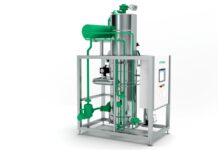European Pharmacopoeia, during its 179th session in June 2024, confirmed the removal of the rabbit pyrogen test- RPT from its monographs.
As explained by the European Directorate for the Quality of Medicines- EDQM, the RPT has been the traditional method for detecting pyrogens.
In June 2021, the European Pharmacopoeia Commission- EPC committed to replacing the RPT in the 59 Ph. Eur. texts with a suitable alternative in about five years. They estimated that the replacement would take around three years.
The European Pharmacopoeia opened the RPT replacement texts for comment in February 2023 and then in June 2024 adopted 57 revised texts, excluding the RPT. Additionally, they added a new general chapter on Pyrogenicity into the European Pharmacopoeia.
Moving forward, no Ph. Eur. text will require the use of the RPT. Instead, developers will have to choose an alternative in vitro test, such as the monocyte-activation test, to control their product’s pyrogenicity, as stated by EDQM. The appropriate test can be selected based on a risk assessment included in the new general chapter.
The EPC emphasized its commitment to reducing the use of animals wherever possible in pharmacopoeial testing, based on the European Convention for the Protection of Vertebrate Animals used for Experimental and Other Scientific Purposes.
EDQM noted that this decision will significantly impact the replacement, reduction, and refinement of animal tests in the quality control of medicines. The revised texts and the new Pyrogenicity chapter will be published in Supplement 11.8 of the Ph. Eur., with the date of implementation set for 1 July 2025, according to EDQM’s conclusion.




















